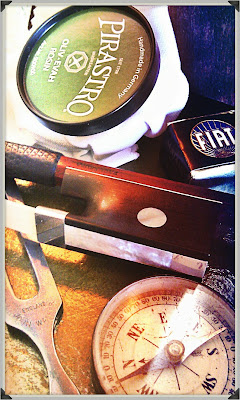If Goldilocks had played a string instrument, it would have
been the viola. Not too big, not too
small, not too high, not too low, but just right. Middle fiddle it is sometimes called, a
nickname that implies that the so-called violin family of instruments is
defined by its smallest member. Which it
is not. Violin means ‘small viola’.
Violoncello means ‘small big viola’ (that is, a small violone, an instrument roughly
equivalent to the double bass). The
viola is the paradigm. The via media and golden mean. It is just right.
Why do I play the viola?
The question is perhaps – as for many of us – why do I not still play
the violin (the instrument on which I started when I was a small boy)? So why did I play the violin? Because my older sister Fiona did (and does), and
her violin teacher used to give her a sweet at the end of each lesson. And why did I change to the viola? Partly because taking the same grade exams
two years after my sister had taken them, on the same hand-me-down half-size or
three-quarter-size fiddle she had used, and getting a few marks less (because
she was, and is, pretty amazing at the violin) was somewhat dispiriting and hardly
felt like blazing a trail. And why did I
stick with the viola? Because I fell in
love with the sound, with the range, with being in the middle of things, seeing
the music from the inside.
Mozart, who like Bach preferred to play the viola, has a habit of writing pedal notes for the viola in his chamber music. The melody, bass line, and harmony move as
the viola’s note stays the same, sometimes for bars on end – as if Mozart
wanted just to enjoy listening to the music in orbit around him, making the
viola the still point of the turning world. The viola is the glue that holds the string sound together in quartet or orchestra; the intermediary between bass line and melody; the harmony; the third dimension. But these are reasons for a viola player to stay in the middle of the
sound and not – as must be the case when we play solo Bach – to be its outer edges too, to be all of the music.
So why play Bach’s cello suites on the viola? Isn’t this music designed for the cello’s
rich low bass register? Pitch is
relative and not absolute. The viola’s
low notes sound low, just as a tenor singing at the bottom of his range sounds
low. When viola or cello soar high, they
both sound high. Because the viola is
tuned an octave above the cello, Bach’s music can be played in the same key,
the same chords combining open and stopped strings in the same way. The music works. And one proof of that is how right it feels
to play it, to explore and demonstrate the instrument’s range of sounds, its
sonorities, its dark depths and giddy heights, its fast and its slow, its
shimmy, sprint, and sidestep, its elegance and its intensity, its gravity and its
humour. For the viola has everything
that this music calls for. It can span,
can touch and comprehend the outlines of, what is a complete universe of
musical perfection.






